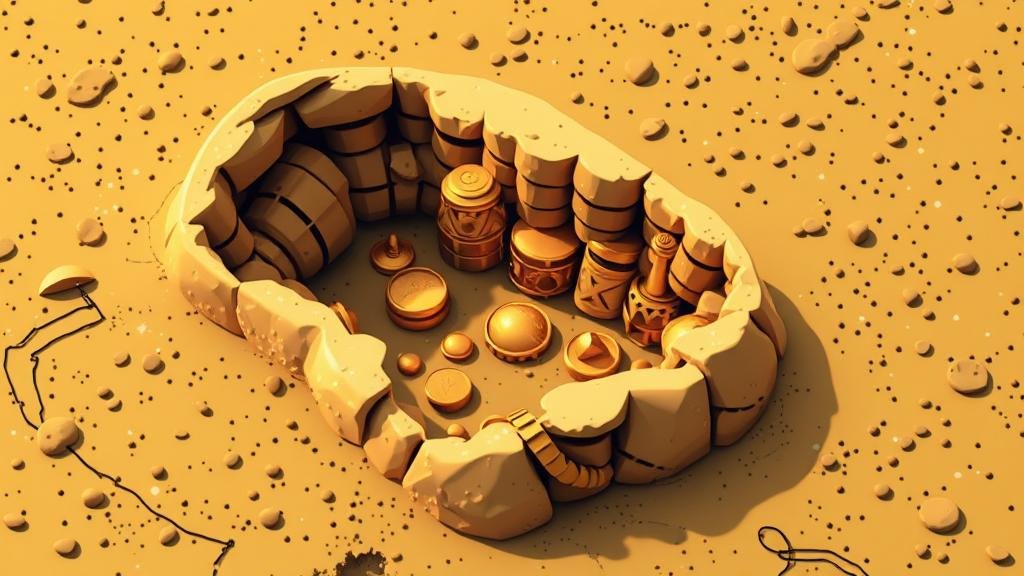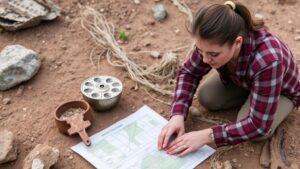How to Identify Treasure Hotspots Near Early Settlement Sites
How to Identify Treasure Hotspots Near Early Settlement Sites
The pursuit of treasure hunting is as old as civilization itself. Among the most fruitful places to search are early settlement sites, where relics of past lives lay hidden beneath layers of earth. But, identifying hotspots for treasure hunting requires a blend of historical research, geological knowledge, and a keen understanding of settlement patterns. This article seeks to equip aspiring treasure hunters with methods to effectively identify these hotspots.
Understanding Early Settlement Patterns
Early settlements were not random; they often followed specific patterns based on geographic and socioeconomic factors. Understanding these patterns can significantly increase the likelihood of discovering treasure.
For example, early European settlers in North America frequently established towns along waterways, which facilitated transport and access to resources. By studying historic maps, such as those from land grants or colonial surveys, treasure hunters can pinpoint these locations. Using historical GIS (Geographic Information Systems) can also assist in overlaying past maps with current geographical data.
- Waterways and rivers were often vital for trade and transport.
- Proximity to natural resources like timber and minerals played a key role in settlement locations.
Utilizing Archaeological Research
Archaeology provides a wealth of information that can guide treasure hunters in identifying potential hotspots. Academic research and archaeological surveys often reveal the sites of former residences, workshops, and trade locations.
For example, excavations in areas like Jamestown, Virginia have uncovered numerous artifacts that offer insight into the daily lives of early settlers. This data highlights areas that may still contain undiscovered artifacts and treasure. Establishing contact with local archaeological societies or universities can provide access to unpublished research and findings.
Historical Documents and Records
Records such as land deeds, tax rolls, and military reports can offer clues about where people lived, worked, and stored valuables. Many settlers kept diaries or letters that may document lost items or buried treasure, serving as invaluable leads.
A notable case is the discovery of treasure in the vicinity of the site of the lost colony of Roanoke. Historical records indicated that settlers often used nearby sites for trading, which led investigators to unearth valuable coins and jewelry. Treasure hunters should regularly consult digital archives, libraries, and local historical societies.
Geological Considerations
The geology of an area can also play a defining role in treasure hunting. Understanding the composition of the soil and its erosion patterns can help identify where treasures may have settled over time.
For example, areas with sandy soils tend to have a higher probability of artifact survival, as they allow for moisture to escape quickly, minimizing decay. In contrast, clay-heavy soils can preserve organic materials. Geological surveys can assist treasure hunters in evaluating the best spots for excavation.
- Surveying areas with sandy soils may yield better results in artifact recovery.
- Identifying high erosion zones may direct attention to sites where artifacts could be unearthed.
Modern Technology in Treasure Hunting
Modern advancements have revolutionized the field of treasure hunting. Technologies such as ground-penetrating radar (GPR), metal detectors, and drones allow for precise and efficient exploration of potential hotspots.
Case studies demonstrate the effectiveness of GPR in locating buried objects without extensive digging. For example, GPR was instrumental in the excavation of historic battlefields, revealing locations of artillery and personal items unseen by the naked eye. Mitigating the risks of damaging fragile archaeological sites, these technologies enhance the treasure hunting experience.
Local Legends and Folklore
Listening to local legends and folklore can provide treasure hunters with insights that may not be documented in formal records. Folklore often contains grains of truth rooted in historical events. For example, tales of buried pirate treasure along the coastlines often lead treasure hunters to investigate maritime trade routes.
Engaging with local communities and heritage groups can uncover stories that may guide explorers to valuable finds. A specific case in point is the lore surrounding the infamous pirate Captain Kidd, whose rumored caches continue to intrigue hunters to this day.
Actionable Takeaways
To maximize the chances of uncovering treasures near early settlement sites, treasure hunters should follow these guidelines:
- Conduct thorough research using historical records and maps.
- Collaborate with archaeologists and historians for deeper insights.
- Use groundwater technology to maximize excavation efforts.
- Evaluate geological conditions to select optimal search areas.
- Engage with local lore and communities to unearth potential stories of lost treasures.
Following these methods can significantly increase the likelihood of discovering artifacts and treasures, connecting modern treasure hunters with the rich histories of early settlements.



